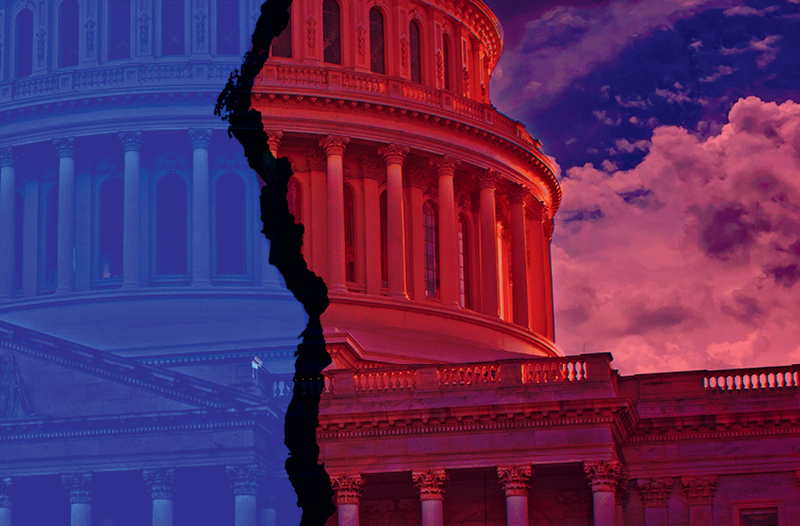
Taming Courtroom Chaos

In the early 2020s, several consecutive years of active storm seasons made the commercial property market much more difficult for insureds—a number of carriers judged the risk too unpredictable, too volatile, and too vulnerable to major natural catastrophe losses, and either pushed up prices or pulled out of the market altogether.
In their place, insurers in the alternative risk and reinsurance spaces stepped up to take on those risks. Now, a similar pattern is occurring in the casualty market, says John Lopes, executive vice president for Nationwide Alternative Ventures and Emerging Markets.
“The casualty market has been pretty firm now on the reinsurance side—especially on an excess of loss basis—going on five years, six years of double-digit premium increases,” Lopes explains. “And I’d say historically if you took a look at hard markets when you got to that level and degree of increases over that period of time, most carriers would feel like they’ve built themselves a pretty good bank to pay for expected losses while earning an adequate return.”
But instead of the market softening that often follows high increases, Lopes says reinsurers have continued to “price for the unknown.” Nuclear verdicts, third-party litigation funding, and social inflation have increased the frequency and severity of casualty-related claims at such unpredictable rates that no carrier “truly feels comfortable,” he notes. As such, much like the property market at the beginning of this decade, casualty is moving away from traditional solutions and toward alternative risk, according to industry reports.
Addressing the risks that flow from nuclear verdicts and third-party litigation funding will require both creativity in alternative risk and robust risk mitigation, Lopes says.
Captives and Fronting
For alternative risk solutions, Nationwide focuses first on group captives. Captives offer a way for like-minded insureds that employ strong risk management and face the same risks—in this case, nuclear verdicts—to join forces to share the risk. “We help facilitate those captive solutions that give [the insureds] some relief from just getting painted with the broad market brush,” Lopes says. Nationwide supports captive insurance companies by providing the licensed paper and other services to meet regulatory requirements.
In Lopes’s experience, if structured correctly, these captive solutions tend to outperform the traditional market when it comes to risk profile. Self-insuring pushes captive insureds to maintain more stringent risk mitigation strategies than traditional insureds.
Similarly to group captives, where a collection of insureds essentially insures themselves, Nationwide also crafts fronting solutions for individual self-insurance structures. These tend to be unique structures tailored to the individual risk, built for insureds confident they can manage their risk appropriately and who simply need the paper to self-insure.
Strategic partnerships are paramount in both cases, Lopes says. Nationwide, for example, works with both large multinational brokers and insurers: brokers bring additional investment and access to wide-ranging distribution networks so Nationwide can reach insureds who aren’t being served; a multinational insurer, meanwhile, provides access to international capital and coverage components—a crucial feature given the increased international risk exposure that often accompanies company growth.
Transparency and Resilience
Risk mitigation is also central to protecting insureds from casualty risk. For Lopes, mitigating legal risk involves both a push for transparency and building insured and insurer resilience.
“A good portion of litigation is driven by outside third parties,” he says. “It’s a big issue that’s impacting not only carriers but also underlying insurers and quite frankly, to some degree, the economy, because it’s impacting the cost of doing business for companies. So if you’re in a courtroom and you’re in litigation, it’s important to know who’s funding the other side.”
Nationwide, through its government relations department, has been working to implement transparency measures, such as requiring plaintiffs to disclose funding sources, according to Lopes. Several states have started to work on this kind of transparency measure, but more needs to be done, Lopes believes. “One of the concerns about litigation funding is that it’s not limited to the U.S.”
Lopes emphasizes that the best way to mitigate these legal exposures is to avoid a loss in the first place. Nationwide offers guidance to its insureds through customized consulting services, step-by-step guides, and webinars to help assess risk management and loss mitigation strategies, all with the goal of reducing overall losses.
“The world continues to get more and more complex, and the gap between insured losses and uninsured economic loss continues to grow,” Lopes says. “As an industry—certainly us at Nationwide—we feel an obligation to work with our customers to address those needs and find creative alternative solutions, such as we do on the structured side, to bridge that gap. Because at the end of the day, we’re here to serve our customers and help them manage risk.”




